Can You Really Repair a Damaged Plastic Bumper?
A damaged plastic bumper can make your car look rough, and you might think you need a whole new one. But what if you could fix it yourself and save some money?
Yes, you absolutely can repair a damaged plastic bumper, especially if the damage is minor like scratches, dents, or small cracks. The key is understanding the type of plastic and using the right tools and materials for a strong, lasting fix.
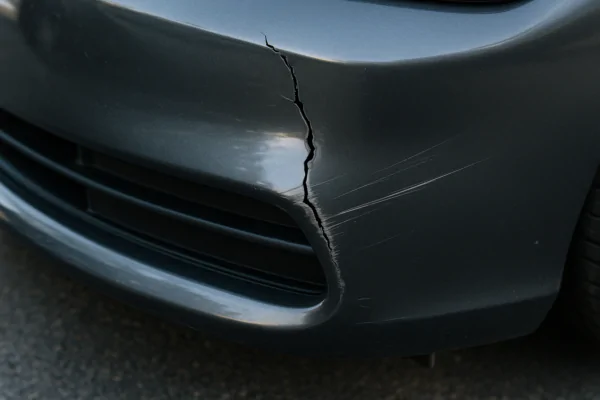
A damaged plastic car bumper.
Learning how to repair a plastic bumper yourself is a great skill. It can save you time and the cost of a professional repair shop. You just need to follow the right steps and be patient. Let’s get into how you can tackle this.
What Body Filler Should You Use on Plastic Bumpers?
Picking the right body filler for your plastic bumper is important. Using the wrong one can lead to cracking or the repair failing quickly.
The best body filler for plastic bumpers is specifically designed for flexible plastics. These fillers contain agents that allow them to flex with the bumper material, preventing cracking and ensuring a durable repair.
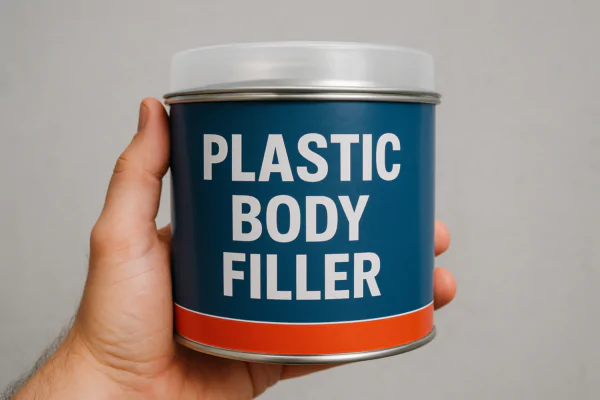
Body filler designed for plastic bumpers.
When you are looking for a body filler, check the label carefully. It should say it is suitable for plastic bumpers or flexible automotive plastics. These fillers are formulated to adhere well to materials like polypropylene or polyurethane, which are common in bumper manufacturing. Using a standard body filler meant for metal will not work because it will not flex with the plastic. This lack of flexibility means any slight bump or even temperature changes can cause the filler to crack or detach. You need a product that moves with the bumper, just like the original material. Some plastic repair kits come with their own specific fillers, which are also a good option as they are designed to work together. Always clean the area thoroughly before applying any filler. Any grease or dirt will stop the filler from sticking properly. Using the right sandpaper, like the fine grits from NOVOGRIT, to prepare the surface is also key for good adhesion. You want a slightly rough surface for the filler to grip onto.
What is the Best Filler Use for Plastic Bumpers?
With so many products out there, it can be confusing to know which filler is truly the best for your plastic bumper repair.
The best filler for plastic bumpers is a high-quality, flexible filler specifically formulated for plastic automotive parts. Look for products that offer strong adhesion, good flexibility, and are easy to sand and shape.
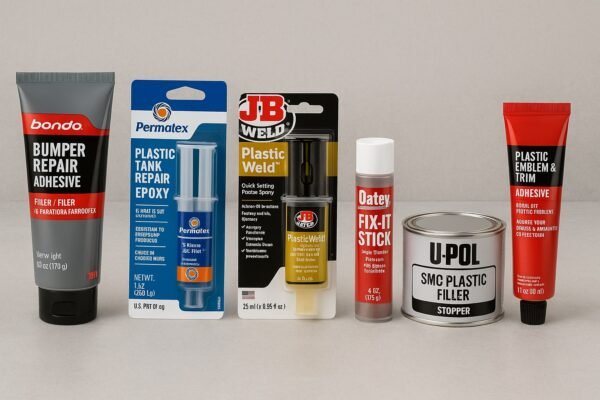
Different types of fillers for plastic bumpers.
The "best" filler often depends on the type of damage and the specific plastic your bumper is made of. For minor scratches and scuffs, a simple filler primer designed for plastic might be enough. This type of product fills small imperfections and provides a good base for paint. For deeper scratches or dents, you will need a thicker, more substantial filler. Two-part epoxy fillers designed for plastic are generally considered very strong and durable. They cure hard but retain some flexibility. Another popular option is a specialized plastic repair filler that comes in a tube or cartridge and is applied with a special gun. These are often used for larger repairs or even reconstructing missing pieces of the bumper. The key is that the filler must bond chemically or mechanically to the plastic and remain flexible. Always check the product specifications to make sure it is compatible with the type of plastic your bumper is made from. You might find a code on the back of your bumper indicating the plastic type (e.g., PP for polypropylene, PUR for polyurethane). Using the right grit sandpaper, like a coarse grit from NOVOGRIT to shape the cured filler and then gradually moving to finer grits for smoothing, is critical for a seamless finish. Proper sanding is half the battle in making the repair invisible.
What is the Best Epoxy for Plastic Bumper Repair?
When it comes to repairing cracks or holes in plastic bumpers, epoxy is a strong choice. But which one should you pick?
The best epoxy for plastic bumper repair is a two-part structural adhesive specifically designed for bonding plastic. Look for epoxies that offer high bond strength, good gap-filling capabilities, and resistance to temperature changes and vibrations.
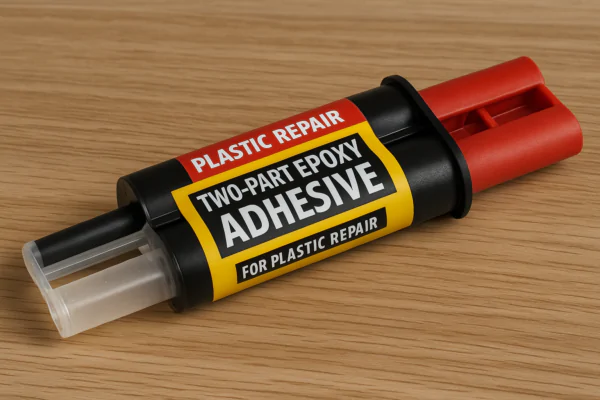
Two-part epoxy for plastic repair.
Not all epoxies are created equal, especially when dealing with flexible materials like bumper plastic. A general-purpose epoxy might seem like it would work, but it often lacks the necessary flexibility and adhesion properties for plastic. You need an epoxy that is formulated to bond with the specific polymers used in bumper manufacturing. Many automotive repair brands offer two-part epoxies specifically for plastic. These usually come in a dual syringe or cartridge that mixes the two components as you dispense them. The key is to find one that creates a strong, structural bond. This means it will not just fill a crack but actually rejoin the broken pieces, making the repair strong enough to withstand the stresses a bumper experiences. Look for epoxies that mention "plastic repair," "flexible," or "structural adhesive" on the packaging. Some epoxies also have gap-filling properties, which are useful for repairing larger cracks or holes where some material might be missing. Preparing the surface is extremely important before applying epoxy. The area around the repair needs to be clean, dry, and slightly roughened. Using the right sandpaper, like a medium grit from NOVOGRIT, can help create the necessary surface profile for the epoxy to adhere well. Following the manufacturer’s instructions for mixing and curing time is also crucial for a successful repair. Don’t rush the process; letting the epoxy cure properly ensures maximum strength.
Conclusion
Repairing a plastic bumper is definitely possible with the right approach and materials. By choosing the correct filler and epoxy, and properly preparing the surface with quality abrasives like NOVOGRIT, you can achieve a strong, invisible repair yourself.
You may also be interested in:

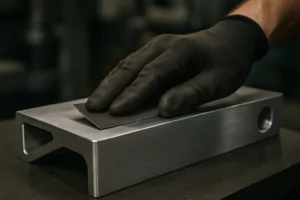
Best Sandpaper for Aluminum: NOVOGRIT's Guide to Flawless Finishes
What is the Best Type of Sandpaper to Use on Aluminum? Do you find yourself frustrated by sandpaper that gums up instantly when you try to smooth aluminum? It is
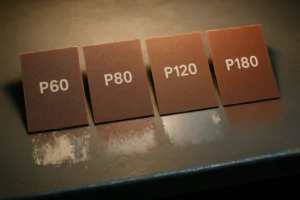
Best Sandpaper for Paint Removal: Grits, Types, & Tips | NOVOGRIT
What is the Best Sandpaper for Removing Paint? Are you tired of staring at chipped, peeling paint on your furniture, walls, or even your car? It’s a common problem, and
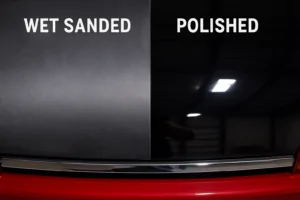
Automotive Wet Sanding: Supplies, Liquids & Best Sandpaper
Automotive Wet Sanding Supplies: What Do You Really Need? Wet sanding is a crucial technique in automotive refinishing, used to achieve a flawlessly smooth surface before painting or polishing. Unlike
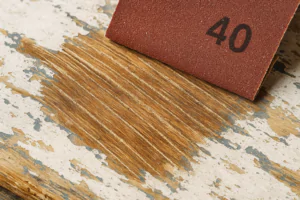
Best Sandpaper for Paint Removal & Grit Guide
What Is the Best Sandpaper for Removing Paint? Removing old paint can be a tedious job, but using the right sandpaper makes all the difference. It’s not just about grit;
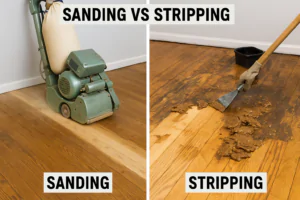
Hardwood Floor Sanding: Screen vs. Sandpaper & Best Practices
Sanding Screen vs. Sandpaper for Hardwood Floors: Which is Best? When you’re tackling hardwood floor projects, choosing the right abrasive is crucial for achieving a smooth, professional finish. Both sanding
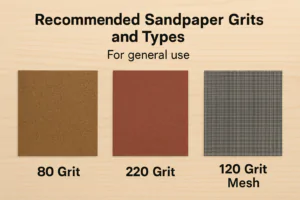
Paper Backing vs. Mesh Sanding Discs: Which Abrasive to Choose?
Paper Back vs. Mesh Sanding Discs: Which One Should You Pick? Choosing the right sanding disc backing can significantly impact your project’s efficiency and finish quality. Paper-backed discs are a
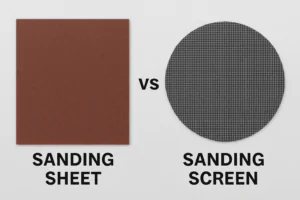
Sanding Mesh vs Paper: Which is More Economical and Better?
Is Sanding Mesh More Economical Than Sandpaper? Comparing Abrasive Costs When stocking up on abrasives, cost is always a factor. Paper sandpaper has traditionally been the standard, but newer mesh
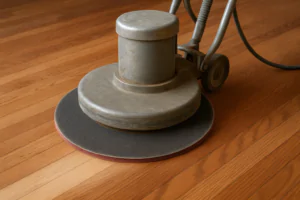
Sanding Nets & Screens Use Cases: When to Choose Mesh Abrasives
Sanding Nets and Screens: What Are Their Best Use Cases? When you encounter sanding nets or screens, you might wonder where they fit into your sanding projects. Unlike traditional solid-backed
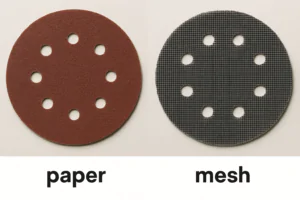
Paper vs. Mesh Sanding Discs: Which Abrasive to Choose?
Paper vs. Mesh Sanding Discs: Which Should You Buy? Choosing the right abrasive disc is essential for efficient and effective sanding. Two primary types dominate the market: traditional paper-backed discs
